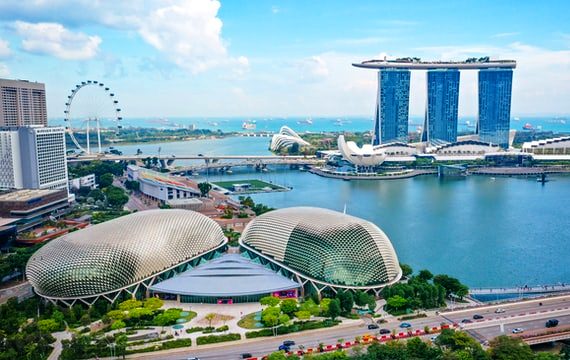
-
Container volumes at Singapore port were recorded at 37.5 million twenty-foot equivalent units in 2021, a new record
-
Singapore handled 599.0 million tonnes of cargo last year
-
Vessel arrival reached 2.81 billion GT, as 13,391 ships called the port last year, down from 15,613 in 2020
The Port of Singapore saw a record-high container throughput of 37.5 million twenty-foot equivalent units (TEUs) in 2021 to remain the world’s busiest container transshipment port, according to the Maritime and Port Authority of Singapore (MPA).
In total, Singapore handled 599.0 million tonnes of cargo in 2021.
Singapore also kept its position as the top bunkering port, registering total bunker sales volume of 50.04 million tonnes in 2021, MPA said.
Singapore commenced regular ship-to-ship LNG bunkering operations from March 2021 and will continue to diversify its fuel offerings in line with its push for maritime decarbonization, the agency said.
The Singapore Registry of Ships continued to rank amongst the top ship registries globally, MPA added, noting that the total tonnage of ships under the Singapore flag stood at 92.3 million GT as of December 2021.
Singapore has also been ranked the world’s top maritime city for a fifth consecutive time in the international benchmarking study by Norwegian classification society DNV and Norwegian consultancy Menon Economics AS.
Vessel arrival reached 2.81 billion gross tonnage (GT), as 13,391 vessels called the port last year, down from 15,613 in 2020, according to a report from S&P Global Platts.
Platts said reports reaching it said the situation at the port “is not improving; delays and congestion still continue.”
As port operations across Asia continue to suffer amid rising coronavirus infections and logistical issues, the impact is being seen at major transshipment ports like Singapore, the commodity price benchmarking and analysis firm added.
S Iswaran, minister for transport, has outlined the four thrusts—resilience, digitalization, decarbonization and talent—that will guide the government’s efforts to advance the maritime sector under the refreshed Sea Transport Industry Transformation Map.
“Maritime Singapore has shown itself to be resilient despite the challenges of the pandemic over the past two years. I am confident that the continued strong tripartite partnership between the Government, industry and unions will see us through the recovery phase and allow Maritime Singapore to emerge even stronger,” said Iswaran.
Iswaran also announced that MPA awarded close to SGD3 million (US$2.2 million) of funding to eight projects involving 35 companies working together to accelerate the development of digital products and solutions for the bunkering sector, part of the first industry transformation map to digitalize the maritime industry.
Photo by Meriç Dağlı on Unsplash




